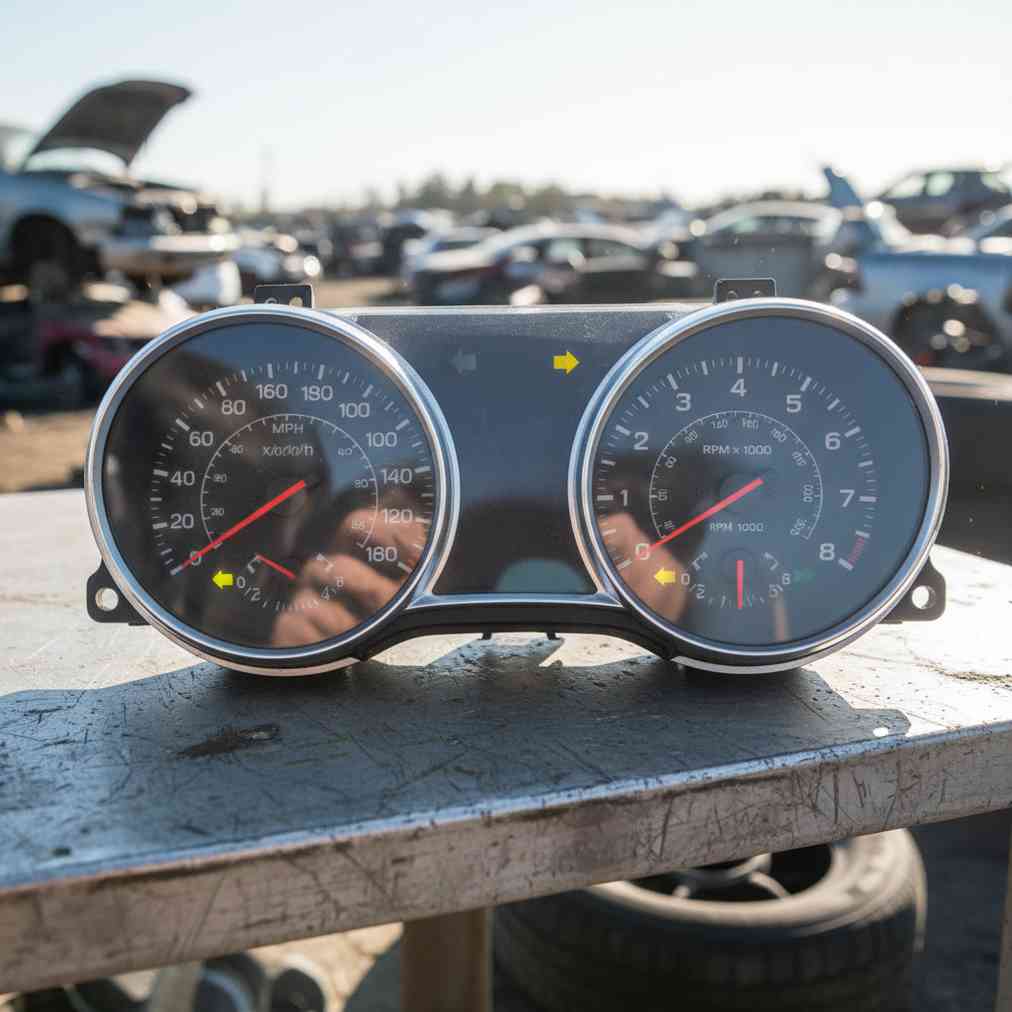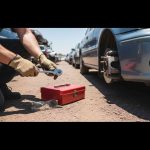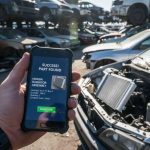Understanding the Basics of Buying a Used Instrument Cluster
Purchasing a used instrument cluster from a junkyard can save you hundreds of dollars compared to buying new OEM parts, but it requires careful consideration of compatibility, mileage issues, and reprogramming requirements. With prices ranging from $25-$50 at junkyards versus $300-$800 for new units, the cost savings are substantial. However, modern vehicles present unique challenges that didn’t exist with older mechanical systems.
Before diving into a junkyard purchase, it’s essential to understand that instrument clusters in modern vehicles are sophisticated electronic components that store vehicle-specific data including mileage, VIN information, and calibration settings. This complexity means that simply swapping clusters isn’t always a plug-and-play operation, especially with digital displays that have become standard in most vehicles manufactured after 2010.
Digital vs. Analog Instrument Clusters: What You Need to Know
The type of instrument cluster in your vehicle significantly impacts the complexity of replacement. Understanding these differences will help you make an informed decision about whether a junkyard purchase is right for your situation.
Analog Clusters
- Physical needles and mechanical gauges
- Simpler electronic systems with fewer integration points
- Generally easier to swap between compatible vehicles
- More common in vehicles manufactured before 2015
- Less expensive to replace and repair
Digital Clusters
- LCD or OLED displays with customizable layouts
- Store mileage and vehicle data in multiple locations
- Require VIN programming and module synchronization
- More complex integration with vehicle’s computer systems
- Higher risk of compatibility issues when sourced from junkyards
According to automotive forums like Focus Fanatics, many enthusiasts report that analog clusters are generally more forgiving when it comes to junkyard swaps, while digital units often require professional programming to function properly.
The Mileage Dilemma: Understanding Odometer Issues
One of the most significant concerns when buying a used instrument cluster is the mileage discrepancy. The cluster you purchase will display the mileage from its original vehicle, not your current car’s actual mileage. This creates several important considerations:
| Issue | Impact | Solution |
|---|---|---|
| Incorrect Mileage Display | Legal and resale value concerns | Professional mileage programming |
| Module Mismatch | Error codes and warnings | ECU synchronization |
| Fraud Prevention Systems | Immobilizer activation | VIN reprogramming |
Modern vehicles store mileage information in multiple locations within the car’s computer network, including the Body Control Module (BCM) and Engine Control Unit (ECU). When these systems detect a mismatch between the cluster’s stored mileage and the vehicle’s actual mileage, they may trigger warning lights or even prevent the vehicle from starting.
“Mileage is definitely in the cluster, but also may be saved in the BCM, so if they don’t match you will throw a code”
Automotive technician advice from junkyard professionals
Reprogramming Requirements and Solutions
Successfully installing a junkyard instrument cluster often requires professional reprogramming services. This process involves syncing the cluster with your vehicle’s specific data and ensuring all electronic systems communicate properly.
What Needs to be Programmed
- Vehicle Identification Number (VIN)
- Correct vehicle mileage
- Engine specifications and calibration
- Security system integration
- Warning light thresholds
The cost of professional programming typically ranges from $100-$300, which should be factored into your total replacement cost. Some automotive electronics specialists offer package deals that include both the used cluster and programming services.
If you’re looking for alternatives to complex cluster replacement, consider exploring dashboard parts you can find at a junkyard that might address your specific issue without requiring a full cluster swap.
What to Look for When Inspecting a Used Cluster
When visiting a junkyard to inspect potential instrument clusters, thorough examination is crucial to avoid purchasing a defective unit. Professional salvage yard experts recommend following a systematic inspection process.
Physical Inspection Checklist
- Screen condition – Check for cracks, dead pixels, or burn-in
- Connector integrity – Examine wiring harness for damage
- Gauge needle condition – Ensure needles aren’t bent or missing
- Button functionality – Test all switches and controls
- Mounting points – Verify tabs and screw holes are intact
Electronic Testing
If the junkyard allows electrical testing, bring a 12-volt power source to verify basic functionality. Many modern clusters will display a self-test sequence when powered up, which can reveal hidden defects that aren’t visible during physical inspection.
For comprehensive guidance on junkyard shopping strategies, check out our article on when to buy used auto parts for optimal results.
Cost Analysis: Junkyard vs. New vs. Refurbished
Understanding the total cost of ownership for each option helps make an informed decision about the best approach for your instrument cluster replacement.
| Source | Initial Cost | Programming Cost | Warranty | Total Investment |
|---|---|---|---|---|
| Junkyard | $25-$75 | $100-$300 | None | $125-$375 |
| Refurbished | $200-$400 | $50-$150 | 1-2 years | $250-$550 |
| New OEM | $400-$800 | $100-$200 | 3+ years | $500-$1000 |
While junkyard clusters offer the lowest upfront cost, the lack of warranty and potential for hidden defects can make refurbished units a better value proposition. Companies like Dr. Speedometer offer lifetime guarantees on refurbished clusters, which may justify the higher initial investment.
Legal Considerations and Odometer Fraud Prevention
Federal and state laws strictly regulate odometer tampering, making proper mileage documentation essential when replacing instrument clusters. The Motor Vehicle Information and Cost Savings Act requires accurate mileage disclosure, and violations can result in significant penalties.
Documentation Requirements
- Keep receipts from junkyard purchase
- Document original vehicle mileage before replacement
- Obtain professional documentation of mileage programming
- Update vehicle title if required by state law
- Maintain service records for future reference
Statistics show that approximately 450,000 vehicles with rolled-back odometers are sold annually in the United States, costing consumers billions of dollars. Proper documentation protects both you and future buyers from legal complications.
For those concerned about legal compliance, our guide on OEM car parts and junkyard availability provides additional insights into maintaining vehicle authenticity.
Alternative Solutions: Dash Gauge Repair and Individual Component Replacement
Before committing to a full cluster replacement, consider whether individual gauge repair or component replacement might solve your problem more cost-effectively. Many issues that appear to require cluster replacement can actually be resolved through targeted repairs.
Common Repairable Issues
- Stepper motor failure in individual gauges
- Burnt-out LED backlighting
- Loose solder connections
- Cracked circuit board traces
- Faulty capacitors or resistors
Professional gauge repair services often cost $150-$300, making them competitive with junkyard replacement when factoring in programming costs. Additionally, repairs maintain your vehicle’s original mileage and eliminate compatibility concerns.
Many DIY enthusiasts find success with component-level repairs using parts from automotive forums and communities where experienced members share detailed repair procedures and source lists for common failure components.
Vehicle-Specific Considerations
Different vehicle manufacturers implement varying levels of security and integration in their instrument clusters. Understanding your specific vehicle’s requirements is crucial for successful replacement.
High-Security Vehicles
Luxury and high-end vehicles often feature advanced anti-theft systems that make cluster replacement particularly challenging. Brands like BMW, Mercedes-Benz, and Audi typically require dealer-level programming tools and may have encrypted communication protocols.
Mainstream Manufacturers
Ford, Chevrolet, Honda, and Toyota vehicles generally have more straightforward replacement procedures, with aftermarket programming tools widely available. However, newer models from these manufacturers are increasingly adopting more sophisticated security measures.
If you’re working on specific popular models, our guides on Honda Civic parts and Honda Accord parts provide model-specific insights for successful junkyard shopping.
Tools and Equipment Needed
Successful instrument cluster replacement requires specific tools and equipment, whether you’re performing the installation yourself or preparing for professional service.
Basic Tool Requirements
- Trim removal tools to avoid dashboard damage
- Socket and screwdriver sets for cluster removal
- Digital multimeter for electrical testing
- OBD-II scanner for diagnostic codes
- Wire strippers and electrical tape for repairs
For comprehensive tool guidance, review our article on essential junkyard tools that professionals recommend for successful parts removal.
Finding the Right Junkyard and Negotiating Price
Not all junkyards are created equal when it comes to electronic automotive components. Choosing the right facility can make the difference between a successful purchase and a costly mistake.
Ideal Junkyard Characteristics
- Climate-controlled storage for electronic components
- Organized inventory system with searchable database
- Testing capabilities for electrical components
- Knowledgeable staff familiar with vehicle electronics
- Reasonable return policy for defective parts
When negotiating price, remember that instrument clusters are specialized components that require careful handling. Don’t compromise quality for minimal savings, as the cost of professional programming and potential failure makes reliability crucial.
For broader junkyard selection guidance, explore our comprehensive guide to pick-and-pull junkyards for finding the best deals on automotive electronics.
Installation Best Practices
Whether you’re installing the cluster yourself or having it professionally installed, following proper procedures ensures optimal results and prevents damage to both the cluster and your vehicle’s electrical system.
Pre-Installation Steps
- Disconnect battery and wait 15 minutes for capacitor discharge
- Document current mileage with photographs
- Take pictures of wiring connections before removal
- Test the replacement cluster on a bench if possible
- Verify all connectors match existing harness
Common Installation Mistakes to Avoid
- Forcing connectors that don’t fit properly
- Skipping the battery disconnection step
- Failing to secure all mounting points
- Not testing all functions before reassembly
- Ignoring warning lights after installation
For additional installation guidance, check our comprehensive resource on understanding car computer control modules to better comprehend how your cluster integrates with other vehicle systems.
Troubleshooting Common Issues After Installation
Even successful installations can present challenges as the vehicle’s computer systems adapt to the new instrument cluster. Understanding common post-installation issues helps you address problems quickly and effectively.
| Symptom | Likely Cause | Solution |
|---|---|---|
| Warning lights stay on | Module mismatch or incomplete programming | Professional reprogramming required |
| Erratic gauge readings | Poor connections or voltage issues | Check connectors and battery voltage |
| No display illumination | Blown fuse or backlight failure | Check fuses and backlight circuit |
| Incorrect speedometer | Wrong gear ratio programming | Recalibrate for vehicle specifications |
Most post-installation issues stem from incomplete programming or module incompatibility. Allow 50-100 miles of driving for adaptive systems to learn and adjust to the new cluster before concluding that professional intervention is necessary.
Making the Final Decision: Is a Junkyard Cluster Right for You?
Deciding whether to purchase a used instrument cluster from a junkyard depends on multiple factors specific to your situation, vehicle, and technical comfort level.
Good Candidates for Junkyard Clusters
- Older vehicles (pre-2010) with simpler electronics
- Budget-conscious repairs on high-mileage vehicles
- Projects where programming services are readily available
- Situations where new clusters are discontinued or expensive
- Owners comfortable with potential complications
Better Alternatives to Consider
- Individual gauge repair for specific failures
- Refurbished clusters with warranties
- New aftermarket clusters for popular vehicles
- Professional rebuilding of original cluster
- Upgraded digital retrofit systems
Remember that the least expensive option isn’t always the most economical in the long run. Factor in programming costs, potential compatibility issues, and the value of your time when making this decision.
For those interested in exploring other cost-effective automotive repair options, our guide to smart money-saving strategies at junkyards provides additional insights for budget-conscious vehicle maintenance.
Successfully buying and installing a used instrument cluster from a junkyard requires careful planning, proper tools, and realistic expectations about potential challenges. While the cost savings can be substantial, the complexity of modern vehicle electronics means this approach isn’t suitable for every situation. By understanding the factors covered in this guide, you can make an informed decision that balances cost, reliability, and long-term satisfaction with your repair.





Leave a Reply
You must be logged in to post a comment.